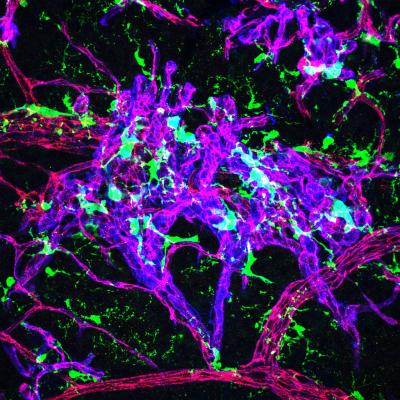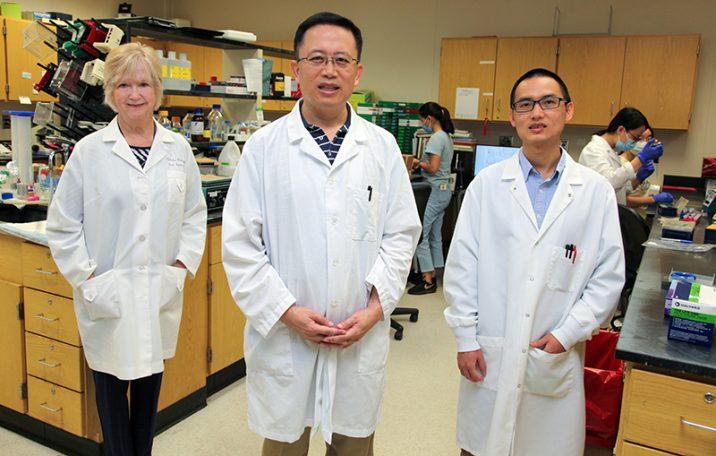
Interactions of endothelial cells and microglia/macrophages in the retina. Image courtesy of Yuqing Huo, M.D., Ph.D., Augusta University.
When the eye isn’t getting enough oxygen in the face of common conditions like premature birth or diabetes, it sets in motion a state of frenzied energy production that can ultimately result in blindness, and now scientists have identified new points where they may be able to calm the frenzy and instead enable recovery.
In this high-energy environ, both the endothelial cells that will form new blood vessels in the retina — which could improve oxygen levels — and nearby microglia — a type of macrophage that typically keeps watch over the retina — prefer glycolysis as a means to turn glucose into their fuel.
Medical College of Georgia scientists have shown that in retinal disease, the excessive byproducts of this inefficient fuel production system initiate a crescendo of crosstalk between these two cell types. The talk promotes excessive inflammation and development of the classic mass of leaky, dysfunctional capillaries that can obstruct vision and lead to retinal detachment, says Dr. Yuqing Huo, director of the Vascular Inflammation Program at MCG’s Vascular Biology Center.

Drs. Ruth B. Caldwell, Yuqing Huo, and Zhiping Liu. Image credit: Kim Ratcliff, Augusta University